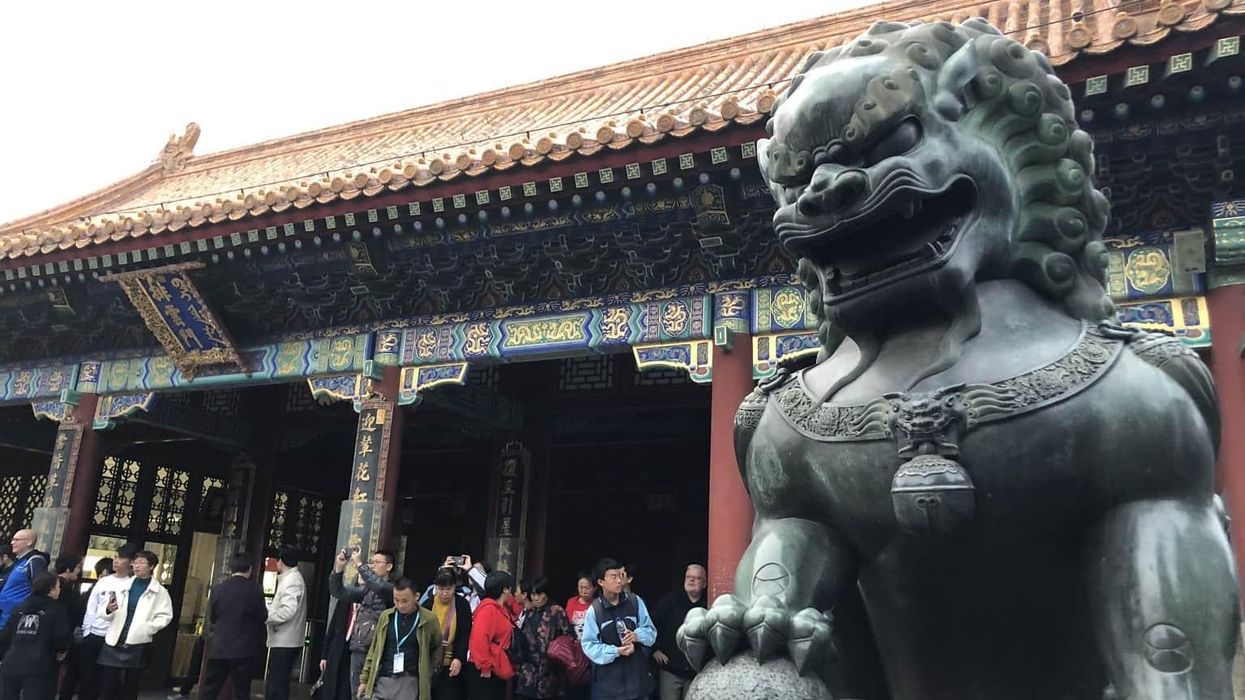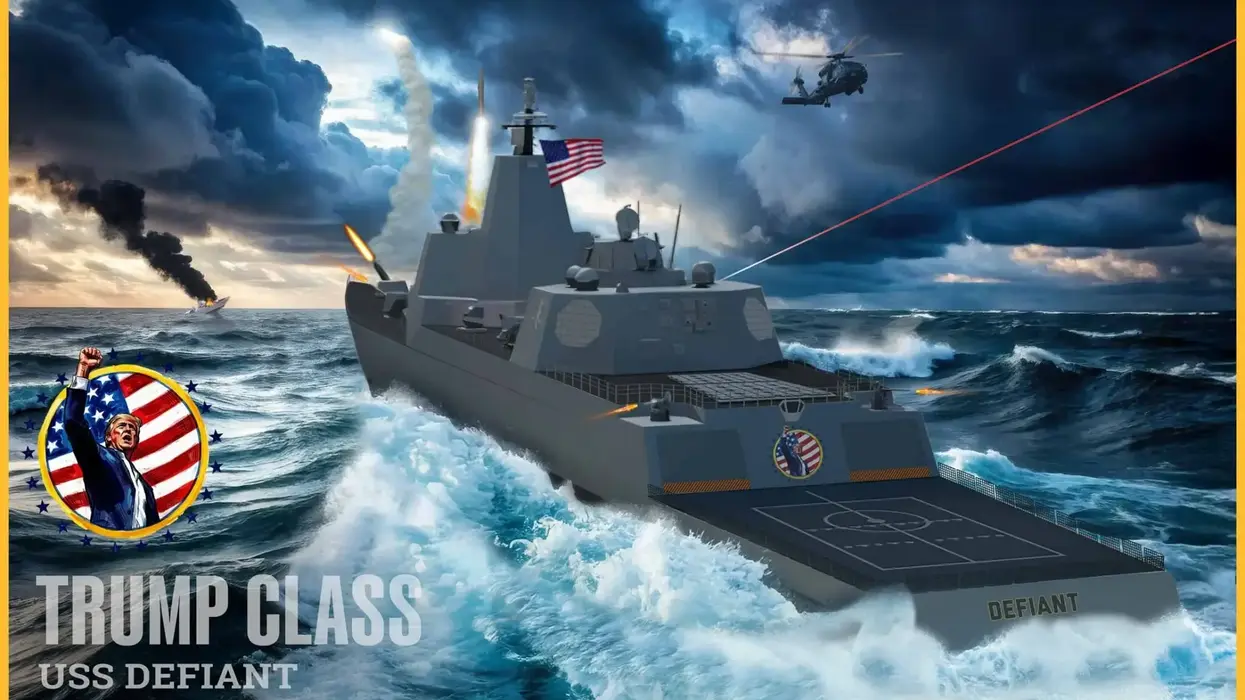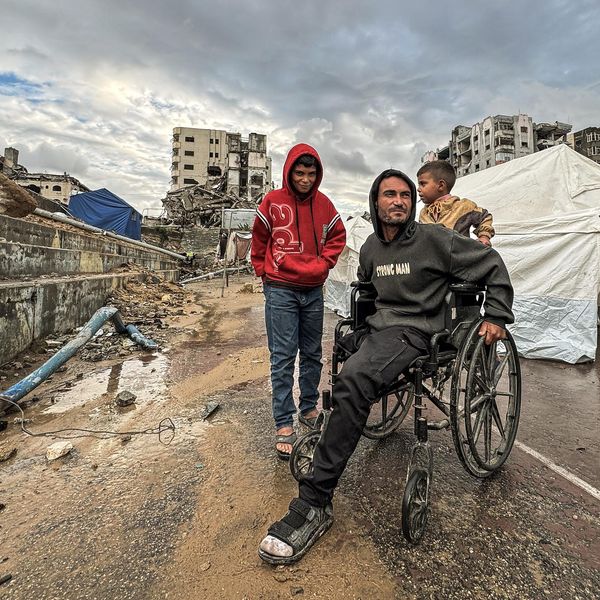It was June 20th and we antiwar vets had traveled all the way to Tulsa, Oklahoma, in the midst of a pandemic to protest President Trump’s latest folly, an election 2020 rally where he was to parade his goods and pretend all was well with this country.
We never planned to go inside the cavernous arena where that rally was to be held. I was part of our impromptu reconnaissance team that called an audible at the last moment. We suddenly decided to infiltrate not just the perimeter of that Tulsa rally, but the BOK Center itself. That meant I got a long, close look at the MAGA crowd there in what turned out to be a more than half-empty arena.
Our boots-on-the-ground coalition of two national antiwar veteran organizations -- About Face and Veterans for Peace (VFP) -- had thrown together a rather risky direct action event in coordination with the local activists who invited us.
We planned to climb the three main flagpoles around that center and replace an Old Glory, an Oklahoma state flag, and a Tulsa one with Black Lives-themed banners. Only on arrival, we found ourselves stymied by an eleventh-hour change in the security picture: new gates and unexpected police deployments. Hopping metal barriers and penetrating a sizable line of cops and National Guardsmen seemed to ensure a fruitless trip to jail, so into the under-attended indoor rally we went, to -- successfully it turned out -- find a backdoor route to those flagpoles.
Once inside, we had time to kill. While others in the group infiltrated and the flagpole climbers donned their gear, five of us -- three white male ex-foot soldiers in America’s forever wars and two Native American women (one a vet herself) -- took a breather in the largely empty upper deck of the rally. Nervous joking then ensued about the absurdity of wearing the Trump “camouflage” that had eased our entrance. My favorite disguise: a Hispanic ex-Marine buddy’s red-white-and-blue “BBQ, Beer, Freedom” tank top.
The music irked me instantly. Much to the concern of the rest of the team, I’d brought a notebook along and was already furtively scribbling. At one point, we listened sequentially to Michael Jackson’s “Billie Jean,” The Beatles’s “Let It Be,” and Queen’s “We Are The Champions” over the arena’s loudspeakers. I couldn't help but wonder how that black man of, let’s say, complicated sexual orientation, four outspoken British hippies, and a gay AIDs victim (Freddie Mercury) would feel about the way the Trump campaign had co-oped their songs. We can guess though, since the late Tom Petty’s family quickly denounced the use of his rock song “I Won’t Back Down” at the rally.
I watched an older white woman in a “Joe Biden Sucks, Nancy Pelosi Swallows” T-shirt gleefully dancing to Michael Jackson’s falsetto (“But the kid is not my son!”). Given that “Billie Jean” blatantly describes an out-of-wedlock paternity battle and that odds were this woman was a pro-life proponent of “family values,” there was something obscene about her carefree shimmy.
A contrast in patriotism
And then, of course, there was the version of patriotism on display in the arena. I’ve never seen so many representations of the Stars and Stripes in my life, classic flags everywhere and flag designs plastered on all manner of attire. Remember, I went to West Point. No one showed the slightest concern that many of the red-white-and-blue adaptations worn or waved strictly violated the statutes colloquially known as the U.S. Flag Code (United States Code, Title 4, Chapter 1).
That said, going undercover in Trumplandia means entering a universe in which it’s exceedingly clear that one political faction holds the flag hostage. They see it as theirs -- and only theirs. They define its meaning, its symbolism, and its proper use, not to speak of whom it represents. The crowd, after all, was vanilla. (There were more people of color serving beers than cheering the president.)
By a rough estimate, half of the attendees had some version of the flag on their clothing, Trump banners, or other accessories, signaling more than mere national pride. Frequently sharing space with Old Glory were images of (often military-grade) weaponry, skulls (one wearing an orange toupee), and anti-liberal slogans. Notable shirts included: the old Texas War of Independence challenge “Come And Take It!” above the sort of AK-47 assault rifle long favored by America’s enemies; a riff on a classic Nixonian line, “The Silent Majority Is Coming”; and the slanderous “Go To Your Safe Space, Snowflake!”; not to mention a sprinkling of the purely conspiratorial like “Alex Jones Did Nothing Wrong” (with a small flag design on it, too).
The banners were even more aggressive. “Trump 2020: Fuck Your Feelings” was a fan favorite. Another popular one photo-shopped The Donald’s puffy face onto Sylvester Stallone’s muscle-bound physique, a machine gun at his hip. That image, of course, had been lifted from the Reagan-era, pro-Vietnam War film Rambo: First Blood Part II, a fitting accompaniment to Trump’s classically plagiarized Reaganesque rallying cry “Make America Great Again.” Finally, a black banner with pink lettering read “L G B T.” Above the letters, also in pink, were logos depicting, respectively, the Statue of Liberty, a Gun (an M16 assault rifle), a Beer mug, and a profile bust of Donald Trump. Get it?
For our small group of multi-war/multi-tour combat veterans, it was hard not to wonder whether many of these flag-and-weaponry enthusiasts had ever seen a shot fired in anger or sported Old Glory on a right-shoulder uniform sleeve. Though we were all wearing standard black veteran ball-caps and overtly Trump-friendly shirts, several of us interlopers feared the crowd might somehow guess what we actually were. Yet tellingly, the closest we came to outing ourselves -- before later pulling off our disguises to expose black “About Face: Veterans Against The War” shirts -- was during the national anthem.
Nothing better exemplified the contrast between what I’ve come to think of as the “pageantry patriotism” of the crowd and the more complex “participatory patriotism” of the dissenting vets than that moment. At its first notes -- we were still waiting in the arena’s encircling lobby -- our whole team reflexively stood at attention, removed our hats, faced the nearest draped flags, and placed our hands upon our hearts. We were the only ones who did so -- until, at mid-anthem, a few embarrassed passersby followed our example. Most of the folks, however, just continued to scamper along, often chomping on soft pretzels, and sometimes casting quizzical glances at us. Trumpian patriotism only goes so far.
Our crew was, in fact, rather diverse, but mostly such vets groups remain disproportionately white and male. In fact, one reason local black and native communities undoubtedly requested our attendance was a vague (and not unreasonable) assumption that maleness, whiteness, and veteran’s status might offer their protests some semblance of protection. Nevertheless, my old boss on West Point’s faculty, retired Colonel Gregory Daddis, summed up the limits of such protection in this phrase: “Patriotic” Veterans Only, Please. And just how accurate that was became violently apparent the moment we “unmasked” at the base of those flagpoles.
Approximately three-dozen combat tours braved between us surely didn't save our nonviolent team from the instant, distinctly physical rancor of the police -- or four members of our group from arrest as the climbers shimmied those flagpoles. Nor did deliberately visible veteran’s gear offer any salvation from the instantly jeering crowd, as the rest of us were being escorted to the nearest exit and tossed out. “Antifa!” one man yelled directly into a Marine vet’s face. Truthfully, America’s “thanks for your service” hyper-adulation culture has never been more than the thinnest of veneers. However much we veterans reputedly fought for “our freedom,” that freedom and the respect for the First Amendment rights of antiwar, anti-Trump vets that should go with it evaporates with remarkable speed in such situations.
Three strands of veteran or military dissent
Still, the intensity of the MAGA crowd’s vitriol -- as suggested by the recent hate mail both About Face and I have received -- is partly driven by a suspicion that Team Trump is losing the military’s loyalty. In fact, there’s evidence that something is indeed astir in both the soldier and veteran communities the likes of which this country hasn't seen since the tail end of the Vietnam War, almost half a century ago. Today’s rising doubt and opposition has three main components: retired senior officers, younger combat veterans, and -- most disturbingly for national-security elites -- rank-and-file serving soldiers and National Guardsmen.
The first crew, those senior officers, have received just about the only media attention, even though they may, in the end, prove the least important of the three. Many of the 89 former defense officials who expressed “alarm” in a Washington Post op-ed over the president’s response to the nationwide George Floyd protests, as well as other retired senior military officers who decried President Trump’s martial threats at the time, had widespread name recognition. They included former Secretary of Defense and retired Marine Corps General Jim (“Mad Dog”) Mattis and that perennial latecomer, former Secretary of State and Joint Chiefs Chairman Colin Powell. And yes, it’s remarkable that such a who’s-who of former military leaders has spoken as if with one voice against Trump’s abhorrent and inflammatory recent behavior.
Still, a little caution is in order before canonizing a crew that, lest we forget, has neither won nor opposed a generation’s worth of unethical wars that shouldn't have been fought. Recall, for example, that Saint Mattis resigned his post not over his department’s complicity in the borderline genocide underway in Yemen or pointlessly escalatory drone strikes in Somalia, but in response to a mere presidential suggestion of pulling U.S. troops out of the quicksand of the Syrian conflict.
In fact, for all their chatter about the Constitution, oaths betrayed, and citizen rights violated, anti-Trumpism ultimately glues this star-studded crew together. If Joe Biden ever takes the helm, expect these former flag officers to go mute on this country’s forever wars waged in Baghdad and Baltimore alike.
More significant and unique is the recent wave of defiance from normally conservative low- to mid-level combat veterans, most, though not all, a generation junior to the attention-grabbing ex-Pentagon brass and suits. There were early signs of a shift among those post-9/11 boots-on-the-ground types. In the last year, credible polls showed that two-thirds of veterans believed the wars in Afghanistan, Iraq, and Syria “were not worth fighting,” and 73% supported full withdrawal from the Afghan War in particular. Notably, such rates of antiwar sentiment exceed those of civilians, something for which there may be no precedent.
Furthermore, just before the president’s controversial West Point graduation speech, more than 1,000 military academy alumni signed an open letter addressed to the matriculating class and blatantly critical of Trump’s urge to militarily crack down on the Black Lives Matter protests. Mainly ex-captains and colonels who spanned graduating classes from 1948 to 2019, they briefly grabbed mainstream headlines with their missive. Robin Wright of the New Yorker even interviewed and quoted a few outspoken signatories (myself included). Then there was the powerful visual statement of Marine Corps veteran Todd Winn, twice wounded in Iraq, who stood for hours outside the Utah state capitol in the sweltering heat in full dress uniform with the message “I Can’t Breathe” taped over his mouth.
At the left end of the veterans’ community, the traditional heart of antiwar military dissent, the ranks of the organizations I belong to and with whom I “deployed” to Tulsa have also swelled. Both in that joint operation and in the recent joint Veterans for Peace (largely Vietnam alumni)and About Face decision to launch a “Stand Down for Black Lives” campaign -- encouraging and supporting serving soldiers and guardsmen to refuse mobilization orders -- the two groups have taken real steps toward encouraging multi-generational opposition to systemic militarism. In fact, more than 700 vets publicly signed their names (as I did) to About Face’s provocative open letter urging just such a refusal. There were even ex-service members among the far greater mass of unaffiliated veterans who joined protesters in the streets of this country’s cities and towns in significant numbers during that month or more of demonstrations.
Which brings us to the final (most fear-inducing) strand of such dissent: those in the serving military itself. Their numbers are, of course, impossible to measure, since such resistance can range from the passive to the overt and the Pentagon is loathe to publicize the slightest hint of its existence. However, About Face quickly received scores of calls from concerned soldiers and Guardsmen, while VFP reported the first mobilization refusals almost immediately. At a minimum, 10 service members are known to have taken “concrete steps” to avoid deployment to the protests and, according to a New York magazine investigation, some troops were “reconsidering their service,” or “ready to quit.”
Finally, there’s my own correspondence. Over the years, I’ve received notes from distraught service members with some regularity. However, in the month-plus since George Floyd’s death, I’ve gotten nearly 100 such messages from serving strangers -- as well as from several former West Point students turned lieutenants -- more, that is, than in the preceding four years. Last month, one of those former cadets of mine became the first West Point graduate in the last 15 years to be granted conscientious objector status. He will complete his service obligation as a noncombatant in the Medical Service Corps. Within 36 hours of that news spreading, a handful of other former students expressed interest in his case and wondered if I could put them in touch with him.
Intersectional vets
In a moment of crankiness this January, using a bullhorn pointed at the University of Kansas campus, I decried the pathetic student turnout at a post-Qasem Soleimani assassination rally against a possible war with Iran. And it still remains an open question whether the array of activist groups that About Face and Veterans for Peace have so recently stood in solidarity with will show up for our future antiwar endeavors.
Still, the growth across generations of today’s antiwar veterans’ movement has, I suspect, value in itself -- and part of that value lies in our recognition that the problem of American militarism isn’t restricted to the combat zones of this country’s forever wars. By standing up for Black lives, pitching tents at Standing Rock Reservation to fight a community-threatening pipeline, and similar solidarity actions, this generation of antiwar veterans is beginning to set itself apart in its opposition to America’s wars abroad and at home.
As both the Covid-19 crisis and the militarization of the police in the streets of American cities have made clear, the imperial power that we veterans fought for abroad is the same one some of us are now struggling against at home and the two couldn’t be more intimately linked. Our struggle is, at least in part, over who gets to define patriotism.
Should the sudden wave of military and veteran dissent keep rising, it will invariably crash against the pageantry patriots of Chickenhawk America who attended that Tulsa rally and we’ll all face a new and critical theater in this nation’s culture wars. I don’t pretend to know whether such protests will last or military dissent will augur real change of any sort. What I do know is what my favorite rock star, Bruce Springsteen, used to repeat before live renditions of his song “Born to Run”: Remember, in the end nobody wins, unless everybody wins.
This article has been republished with permission from TomDispatch.
















